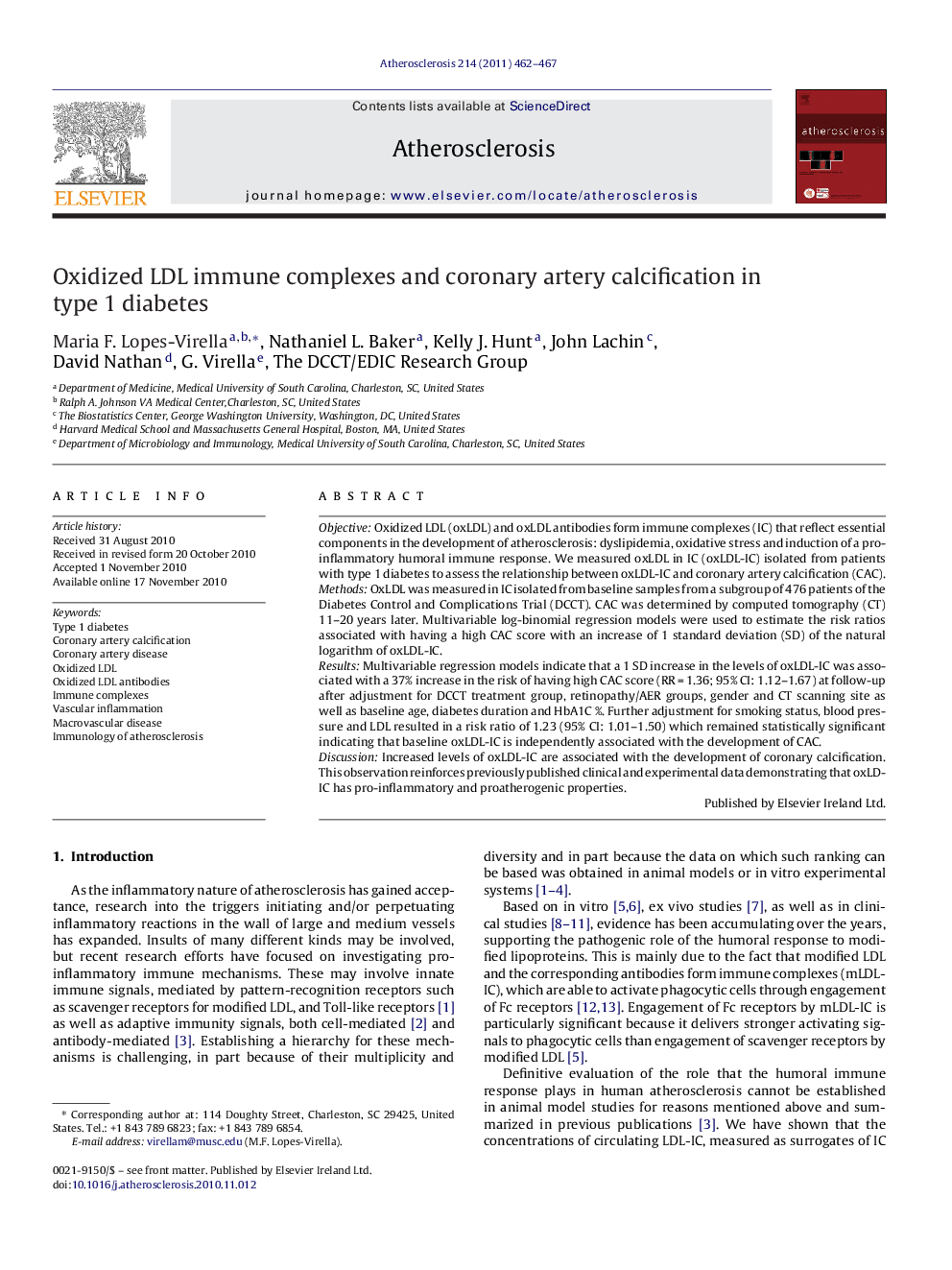| Article ID | Journal | Published Year | Pages | File Type |
|---|---|---|---|---|
| 5950019 | Atherosclerosis | 2011 | 6 Pages |
ObjectiveOxidized LDL (oxLDL) and oxLDL antibodies form immune complexes (IC) that reflect essential components in the development of atherosclerosis: dyslipidemia, oxidative stress and induction of a pro-inflammatory humoral immune response. We measured oxLDL in IC (oxLDL-IC) isolated from patients with type 1 diabetes to assess the relationship between oxLDL-IC and coronary artery calcification (CAC).MethodsOxLDL was measured in IC isolated from baseline samples from a subgroup of 476 patients of the Diabetes Control and Complications Trial (DCCT). CAC was determined by computed tomography (CT) 11-20 years later. Multivariable log-binomial regression models were used to estimate the risk ratios associated with having a high CAC score with an increase of 1 standard deviation (SD) of the natural logarithm of oxLDL-IC.ResultsMultivariable regression models indicate that a 1 SD increase in the levels of oxLDL-IC was associated with a 37% increase in the risk of having high CAC score (RRÂ =Â 1.36; 95% CI: 1.12-1.67) at follow-up after adjustment for DCCT treatment group, retinopathy/AER groups, gender and CT scanning site as well as baseline age, diabetes duration and HbA1C %. Further adjustment for smoking status, blood pressure and LDL resulted in a risk ratio of 1.23 (95% CI: 1.01-1.50) which remained statistically significant indicating that baseline oxLDL-IC is independently associated with the development of CAC.DiscussionIncreased levels of oxLDL-IC are associated with the development of coronary calcification. This observation reinforces previously published clinical and experimental data demonstrating that oxLD-IC has pro-inflammatory and proatherogenic properties.
